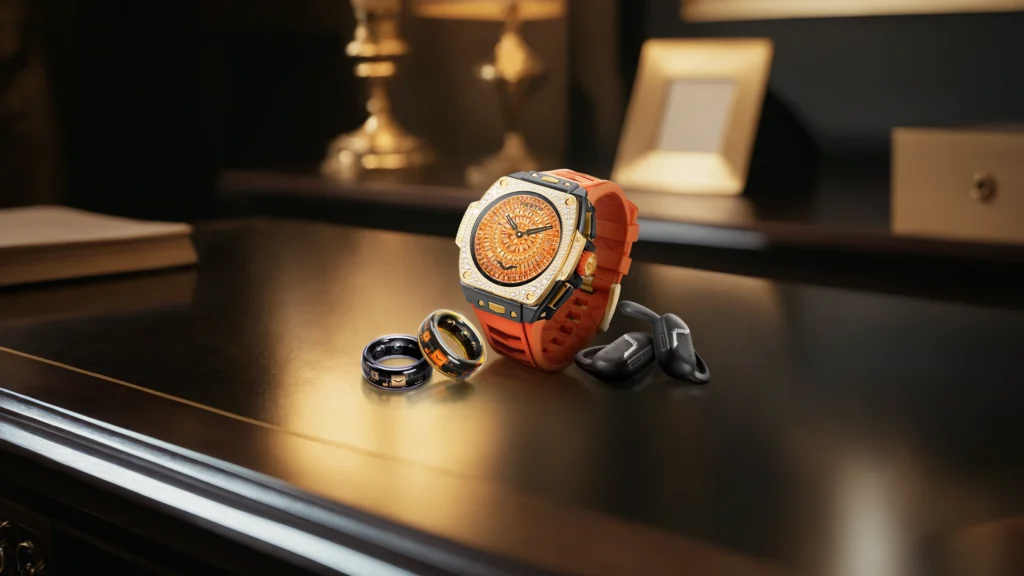
Choosing the right blood sugar monitor can seem hard. It’s really about what works best for you. Do you want the best blood sugar monitor that offers a basic glucose meter, or one with extra features like app connection? A blood sugar monitor that fits your needs can help a lot with diabetes care. Research shows that Bluetooth glucose meters can improve tracking by 71%. The right monitor helps you stay in control and manage diabetes daily.
Key Takeaways
-
Pick a blood sugar monitor that matches your daily needs. Decide if you want a simple meter or a CGM with extra features.
-
Accuracy is very important. Choose monitors approved by the FDA for trustworthy results to help manage diabetes better.
-
Look for easy-to-use devices. Monitors needing less blood and giving fast results make checking easier and less painful.
-
Think about the price. Basic meters cost less at first, but CGMs might save money later by improving health and avoiding problems.
-
See if it works with apps. Monitors that link to apps can track your data and share it with your doctor for better care.
Types of Blood Sugar Monitors
Picking the right device for checking your blood sugar is important. Let’s look at the main types of glucometers and how they work for different lifestyles.
Standard Blood Glucose Meters
Standard blood glucose meters, also called basic glucose meters, are very common. These devices need a small drop of blood, usually from your fingertip. You use a lancet to prick your finger, place the blood on a test strip, and the meter shows your sugar level.
Here’s why people like them:
-
Affordable and Accessible: They are cheap and easy to find, making them a popular choice.
-
Reliable Results: Most meters give steady results, with less than 4% variation in readings.
But there are downsides. Finger pricks every day can hurt, and it’s not convenient if you’re busy. Even so, these meters are simple and cost-effective, so many people rely on them.
Continuous Glucose Monitors (CGMs)
For a more advanced option, continuous glucose monitors (CGMs) might be better. These devices use a tiny sensor under your skin to check sugar levels all the time. They update every five minutes and often connect to apps or wearables for easy tracking.
Benefits of CGMs include:
-
No Finger Pricks: You don’t need to prick your finger daily.
-
Proactive Alerts: They warn you about high or low sugar levels so you can act fast.
-
Improved Health Outcomes: Studies show CGMs can lower HbA1c and reduce hypoglycemia risk by 50%.
However, CGMs cost more and may need troubleshooting. Still, their constant tracking makes them great for people with diabetes, especially type 1 diabetes.
Comparing Pros and Cons
Deciding between standard glucose meters and CGMs depends on your needs and budget. Here’s a quick comparison:
|
Feature |
Standard Blood Glucose Meters |
Continuous Glucose Monitors (CGMs) |
|---|---|---|
|
Cost |
Cheap and affordable |
Expensive upfront and for upkeep |
|
Ease of Use |
Easy but needs finger pricks |
No pricks, but setup can be tricky |
|
Data Tracking |
Manual tracking only |
Real-time updates with apps |
|
Comfort |
Finger pricks can hurt |
Comfortable after sensor placement |
|
Accuracy |
Good for single checks |
Accurate and updates constantly |
Both types have good points. If you want something simple and cheap, go with a basic meter. If you need advanced features and real-time data, CGMs are worth considering.
Tip: Think about your daily habits and health goals before picking a monitor. The best blood sugar monitor is the one that fits your life easily.
Key Features of the Best Blood Sugar Monitor
When picking the best blood sugar monitor, focus on what fits your health and daily life. Here are the main features that make a glucometer special.
Accuracy and Reliability
Accuracy is the most important part of any glucose monitor. You depend on these numbers to make health choices. The best monitors meet FDA rules, keeping readings within 15-20% of true sugar levels. This accuracy helps you see patterns and learn how food or exercise changes your sugar levels.
Not all monitors work the same way. Studies show accuracy depends on the model, where you test, and your sugar range. For example, continuous glucose monitors (CGMs) often give steadier results than basic glucometers. This makes them helpful for managing diabetes and avoiding sugar spikes or drops.
Pro Tip: Check if your glucometer is FDA-approved. It ensures reliable results.
Ease of Use and Accessibility
If a device is hard to use, you might stop using it. That’s why easy-to-use monitors are so important. Many modern glucometers have big screens and need only a tiny blood drop. Some even talk, helping people with vision problems.
CGMs are even easier. They skip finger pricks and give constant sugar updates. They also connect to apps that show your data clearly. For example, reports like AGP make it simple to find trends and share them with your doctor.
Did You Know? CGMs can improve life for people with diabetes. They lower hypoglycemia risks and help reduce HbA1c levels.
Connectivity and Data Tracking
Today, tech features are a must for blood sugar monitors. Many now link to apps or wearables, giving real-time data. This helps you track sugar levels and make better health choices.
Research shows these features are very useful. CGMs are great at spotting trends and giving helpful insights. By checking your data, you can see how food, exercise, or medicine affects you. This helps you manage diabetes better.
Why It Matters: Connected devices don’t just save data—they help improve your health. With the right app, you can share progress with your doctor and adjust your care plan.
Sample Size and Speed
Checking your blood sugar should be quick and easy. Using big blood samples or waiting long for results can be frustrating. Modern devices are made to make testing fast and simple.
Most basic blood sugar meters need only a tiny blood drop. This is usually less than 1 microliter, which makes testing less painful. Many devices also give results in under five seconds. These features are great for busy people who want fast and easy testing.
Continuous glucose monitors (CGMs) are even more convenient. They don’t need blood samples at all. Instead, they use sensors to check sugar levels every few minutes. This hands-free method avoids finger pricks and gives real-time updates whenever you need them.
Quick Tip: If you dislike finger pricks or need fast results, pick a device with small sample needs and quick results. CGMs might be your best choice.
Affordability and Maintenance
Cost matters when picking a blood sugar monitor. You want something affordable but still accurate and useful. Basic blood sugar meters are cheaper upfront. However, test strips can cost more over time, so think about long-term expenses.
CGMs cost more at first but may save money later. They help control sugar levels better and lower the risk of health problems. For example, CGMs cost about $15.20 daily, but they can reduce medical bills by improving health and avoiding complications.
Maintenance is also important. Basic meters need new test strips and lancets often. CGMs need sensor changes every 7 to 14 days. Some advanced tools, like the Aura Ring by VERTU, are easier to maintain. These devices use smart technology to make monitoring feel simple and natural.
Did You Know? Spending more on a good monitor can save money later by improving health and preventing problems.
How to Pick the Best Glucose Meter for Your Lifestyle
Matching to Daily Habits
Your daily habits matter when picking a blood sugar monitor. If you’re busy and active, a continuous glucose monitor (CGM) might be better. It checks your sugar levels all day without finger pricks. This makes managing diabetes easier while staying on the move. But if you like simple tools, a basic glucose meter could be a good choice.
Here’s how matching your monitor to your habits helps:
|
Evidence Description |
Impact on Diabetes Management |
|---|---|
|
Helps you make smarter choices and manage diabetes better. |
|
|
CGM lowers the chance of low sugar episodes. |
Reduces risks and improves daily life quality. |
|
Extra data from CGM supports quick and personal decisions. |
Lets you adjust your routine fast to keep sugar stable. |
|
CGM shows sugar changes that basic meters miss. |
Gives a clearer view of your levels during the day. |
Think about your lifestyle when choosing a glucometer. Do you need constant updates? Or do you prefer a simple device for quick checks? The right monitor will make tracking your sugar feel natural.
Helping with Physical Challenges
Physical challenges shouldn’t stop you from managing diabetes. Some monitors are made for people with special needs. For example, CGMs are great if you struggle with finger movements. They skip daily pricks and send alerts for high or low sugar levels.
Here’s how CGMs help with physical challenges:
|
Evidence Description |
Findings |
Benefits for Users with Physical Challenges |
|---|---|---|
|
Boosted activity and 1% lower HbA1c |
Makes staying active and managing diabetes easier. |
|
|
CGM improves time in healthy sugar range (TIR) |
Better tracking of sugar trends |
Helps keep sugar levels steady. |
|
Alerts and arrows from CGM |
Stops dangerous low sugar episodes |
Prevents drops during daily activities. |
If you have vision problems, pick a glucometer with a big screen or sound features. These small changes can make managing diabetes much easier.
Thinking About Costs and Insurance
Cost is a big factor when choosing a glucose monitor. Many insurance plans pay for CGMs, but coverage depends on your provider. Medicare might cover CGMs if you meet certain rules, like having diabetes and a doctor’s note. Knowing your insurance plan can save money.
Here are key points about cost and insurance:
-
Many insurance plans pay for CGMs, but details vary.
-
Medicare may cover CGMs if you qualify.
-
Without insurance, affordable options like FreeStyle Libre cost about $154 for two 14-day sensors.
If you’re paying yourself, think about long-term costs. Basic meters are cheaper upfront, but test strips add up over time. CGMs cost more at first but may save money by improving health and avoiding problems. Pick a glucose monitor that fits your budget and health needs.
Data Tracking and App Compatibility
Tracking your blood sugar is easier with apps and smart devices. These tools help you see patterns, share info with your doctor, and adjust your habits to stay healthy.
Apps for diabetes are becoming very popular. By 2016, 142 million people were expected to download health apps. Many apps now include features like insulin calculators and chat tools. A survey of type 1 diabetes patients found that easy use and wireless syncing were the most wanted features. These apps make tracking simple and help you manage your health better.
One example is the mySugr® app. People liked its design and how simple it was to use. They also found the glucose stats helpful for making better choices. Most users kept using the app even three months after the study ended. This shows how useful apps can be for long-term diabetes care.
Devices like continuous glucose monitors (CGMs) make this even better. They connect to apps and give real-time updates. You can see sugar changes all day and get alerts for highs or lows. This makes managing diabetes easier and less stressful.
When picking a device, choose one that works with an app. It’s not just about numbers—it’s about understanding your body and staying healthy. The right tools can help you turn data into action and take charge of your health.
Tip: Pick an app that’s simple and fits your daily routine. The easier it is, the more likely you’ll keep using it.
Cost and Insurance for Blood Sugar Monitoring
Budgeting for a Glucometer
Planning ahead can help you save money on blood sugar monitors. Basic glucometers cost less at first, but test strips can get expensive over time. Continuous glucose monitors (CGMs) cost more upfront but may save money later by improving your health.
Here’s what studies show about CGM costs:
-
Governments could spend $1,372 on CGMs and still save money.
-
In Ontario, CGM users saved between $1,395 and $9,841, averaging $5,195.
-
These savings show how advanced devices can lower costs and improve health.
Think about both the initial price and long-term expenses when choosing a monitor. Planning now can make diabetes care cheaper in the future.
Understanding Insurance Coverage
Insurance can greatly affect how much you pay for blood sugar monitors. Many plans cover basic glucometers and CGMs, but your costs may vary. For example:
-
Diabetes supplies cost $490 yearly, while insulin costs $435.
-
CGM users spend $472 per year, and insulin pump users spend $562.
-
High-deductible plans often mean higher out-of-pocket costs.
If you’re unsure about coverage, ask your insurance provider. Knowing what’s included can help you plan better and avoid unexpected costs.
Finding Affordable Options
Choosing a monitor that fits your budget is important. Here’s a simple cost comparison:
|
Device Type |
Median Price (US$) |
Days' Wages Needed |
Availability (%) |
|---|---|---|---|
|
Blood Glucose Meter |
15.62 – 35.18 |
1.5 – 10.9 |
0 – 57 (public) |
|
Test Strips |
0.27 – 0.56 |
1.0 – 12.8 |
39 – 100 (private) |
|
88 – 107 |
15 – 65 |
N/A |
Basic glucometers are cheaper upfront, but CGMs offer more features and benefits over time. Look for discounts, government help, or bulk deals on test strips to save money. With some research, you can find a monitor that works well and fits your budget.
Special Considerations for Advanced Features
CGM-Insulin Pump Combos
Using continuous glucose monitors with insulin pumps can change diabetes care. These devices work together to check sugar levels and give insulin automatically. This setup reduces guessing and helps prevent sugar swings.
Studies show how helpful this combo is:
|
Study Name |
Intervention |
Outcome |
Results |
|---|---|---|---|
|
ASPIRE In-Home |
Sensor-augmented pump therapy (SAP) vs. SAP + LGS |
Fewer nighttime low sugar events |
|
|
6-month randomized study |
SAP + LGS vs. pump therapy (no CGM) |
Severe and moderate low sugar events |
Reduced from 129.6 to 28.4 events per 100 patient-months |
These systems make diabetes care easier and improve life quality. They lower the chance of low sugar episodes and give better control. If you want a hands-free option, this combo could be ideal.
Compatibility with Apps and Wearables
Modern blood sugar monitors are smarter than ever. Many continuous glucose monitors now connect to apps and wearable devices. This makes tracking sugar levels simple and clear.
Here’s what research shows:
|
Evidence Description |
Findings |
Source |
|---|---|---|
|
Wearable data and lifestyle patterns |
Improves health through better habits |
|
|
Reduced high and low sugar levels in T1D and T2D |
||
|
Real-time feedback systems |
Encourage healthy changes and better care |
These features let you track sugar levels, find trends, and get alerts quickly. Apps turn data into easy-to-understand tips. Wearables like smartwatches make staying healthy even simpler.
Tip: Pick a monitor that works with your favorite app or wearable. It’ll make diabetes care easier.
Future-Proofing Your Choice
Think ahead when choosing a blood sugar monitor. Technology is improving fast, so pick a device that stays useful over time. Future-proofing means choosing features that will still help as new tools come out.
Here are some trends to watch:
|
Advancement |
Benefit |
|---|---|
|
Improves sugar control and reduces extra testing. |
|
|
Automated system integration |
Helps with insulin delivery and sugar management. |
|
Wider insurance coverage |
Makes CGMs more affordable and available. |
|
Fewer fingerstick checks |
Reduces pain and encourages regular monitoring. |
|
Hypoglycemia alarms |
Warns about low sugar levels, improving daily life. |
|
Longer sensor wear |
Allows more days of monitoring without frequent changes. |
Devices like continuous glucose monitors already lead the way. They offer alarms, longer sensor use, and connect with automated insulin systems. These features make diabetes care less stressful.
Quick Tip: Choose a monitor with advanced features that match your future health needs. It’s worth the investment.
Picking the right blood sugar monitor needs careful thought. Choose one that matches your health, daily routine, and budget. Some people like simple glucometers, while others prefer advanced CGMs. CGMs give real-time updates to help manage diabetes better. They can guide your food choices and medicine use. Remember to check costs and insurance coverage before buying. These factors are important in your decision. For help, ask your doctor. They can suggest the best option for you.
FAQ
How often should you check your blood sugar levels?
This depends on your diabetes type and treatment plan. Most people check before eating and at bedtime. Continuous glucose monitors track all day, so manual checks aren’t needed.
Can blood sugar monitors connect to your phone?
Yes, many monitors link to apps on your phone. These apps show sugar trends and let you share data with your doctor.
Are continuous glucose monitors painful to use?
Not much. Putting the sensor feels like a quick pinch. After that, it’s painless and skips finger pricks, making diabetes care easier.
What’s the best monitor for beginners?
Basic blood glucose meters are simple and affordable for beginners. For advanced features, try a continuous glucose monitor for constant tracking.
Do insurance plans cover blood sugar monitors?
Most insurance plans pay for basic monitors and some CGMs. Ask your provider what’s covered and if you need a doctor’s note.




